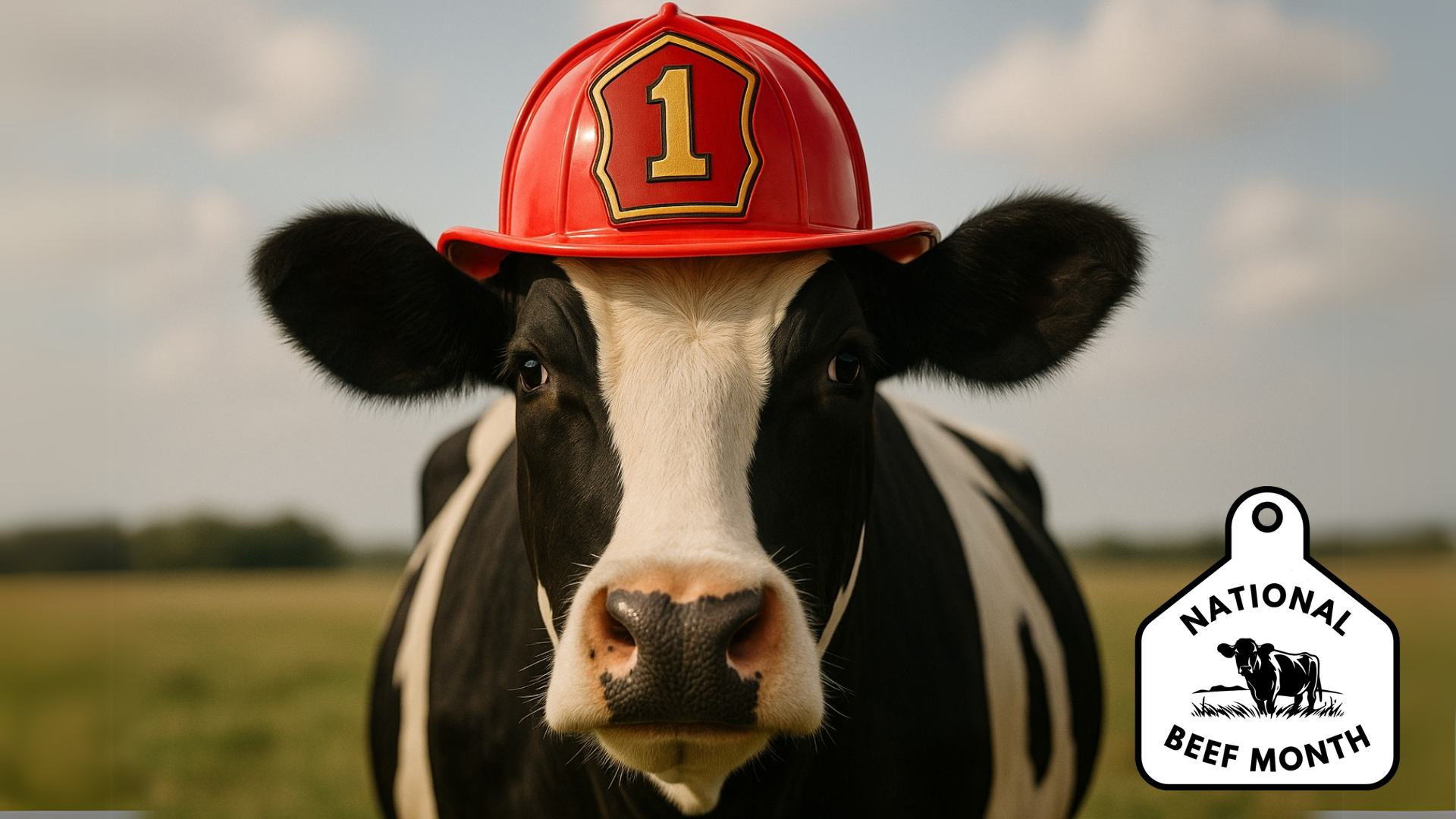Steak eaters have strong opinions about the doneness of their meat. May – National Beef Month – is an ideal time to explore the many benefits of the bodacious bovine beyond cooking temperature.
In the first part of May the landscape is still green with rain showers sprinkling almost every region. Grass and underbrush are abundant, and our forests are lush wonderlands full of fuels for fire season. Cattle are mostly done calving, have been tagged (and possibly branded) and are headed out to summer pastures all over the state. Summer grazing turnout can, and should be, dual purpose. Cattle are an excellent source of fine fuel reduction and can reach areas difficult for people to navigate in addition to fattening cattle for fall.
However, there are some items to consider when looking at what we can do to improve outcomes in grazing and wildfire prevention, including a more strategic approach to grazing permits, grazing in the wildland-urban interface and potential ignition sources. Each of these areas pose potential challenges but also areas for growth, change, and policy improvement.
Washington state’s grazing permit process is complex and, often, difficult to utilize as there are several agencies that govern permits throughout the state including the Washington State Department of Natural Resources, the Washington State Department of Fish & Wildlife, and the U.S. Forest Service. Each agency has its own application process for permits and each agency notes that new permits rarely become available as existing permit holders do not often “give up” their permits.
The state could explore more strategic and creative approaches to managing the public lands in its management portfolio by expanding the grazing program. Under the current program, approximately 750,000 acres of about 3.3 million acres of available public lands are grazed. There is an opportunity for cattle to clear overgrown forest and rangeland in limited grazing allotments statewide to help combat our ongoing wildfire concerns. By expanding the current grazing permit and lease programs, the state would earn additional income from the trust lands, reduce fuel loads, and create new feed resources for our ranching community.
Developing creative strategies for grazing also means re-examining the wildland-urban interface – the area where the development of homes meets undeveloped vegetation – and how livestock inhabit it, even temporarily. As people from urban areas seek primary or secondary residences in rural communities, the wildland-urban interface continues to grow and change, meaning our approach to wildfire management without those spaces must adapt, too. Livestock, specifically cattle, can be a part of the larger means by which to address those needs. Encouraging producers to co-locate smaller herds of livestock in those spaces allows for a clearing of wildfire fuels while maintaining the environment sought by those moving into those spaces.
Finally, when cattle are part of the larger wildfire prevention discussion, many of the considerations for ignition sources change from campfires and negligence to acts of nature and accidents. Cattle act as a preventative measure for some who might otherwise seek out environments in which they do not belong. By maintaining large livestock in a given area, illegal camping, trespassing, and fires during a burn ban are less likely to occur.
Whether taken as individual or collective considerations, cattle are a benefit to any discussion about wildfire prevention. While research on the topic suggests there is a lot more work to do, there is enough to tell us cattle can put a damper on the flames of fires before they even begin. That, along with a medium-rare steak, is something to sink your teeth into during National Beef Month.




